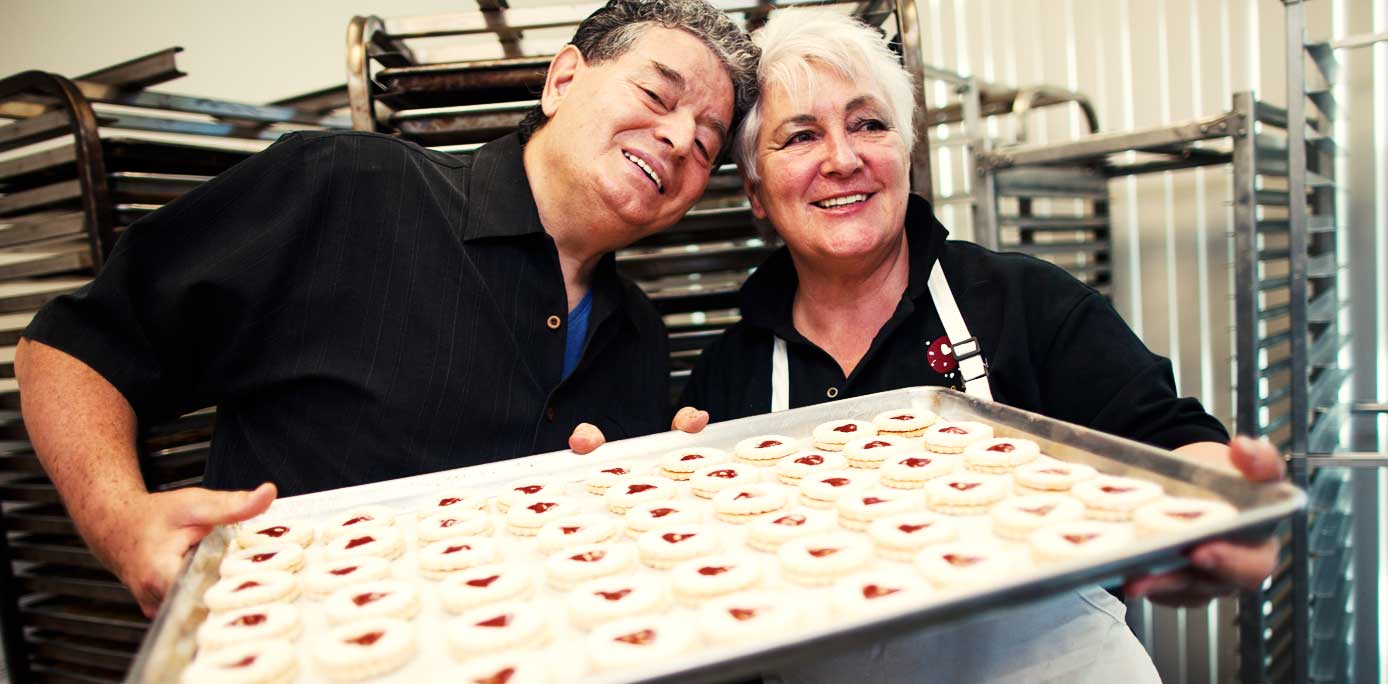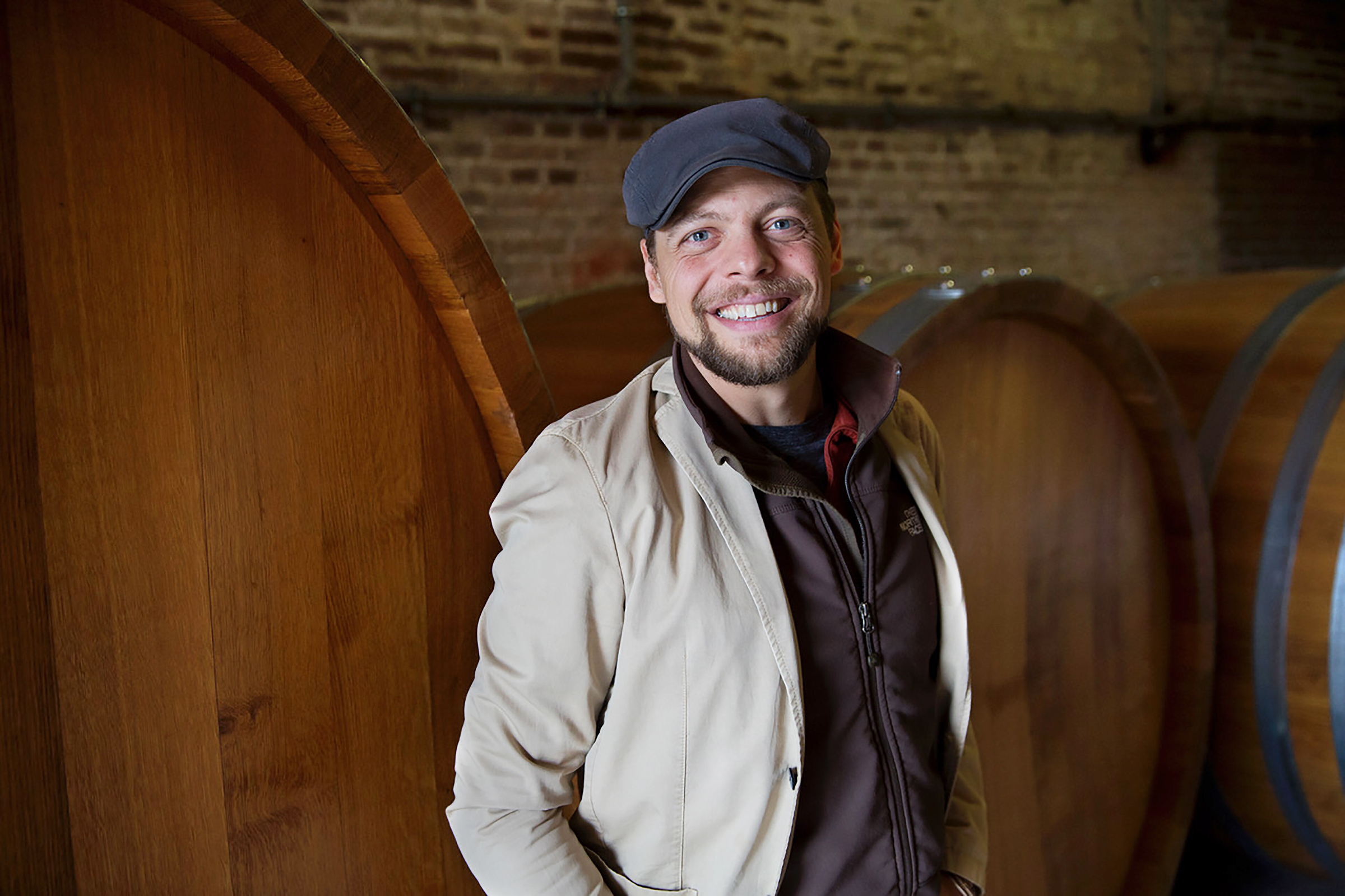The annual Winter Fancy Food Show by the Specialty Food Association was back in the Bay Area, as the largest marketplace devoted to specialty foods and beverages on the West Coast kicked off, on January 13.
It was 1952 when, for the first time, New York City hosted the just born not-for-profit trade association. Today, with two annual editions between East and West Coasts, it provides almost 4,000 food artisans, importers, buyers and entrepreneurs worldwide with resources, knowledge, and connections in order to be successful in the food industry.
The show features more than 1,400 companies, exhibiting over 90 thousands specialty foods. San Francisco welcomed the Winter Edition, offering tasting opportunities, new trends, learning and networking activities. All under the same roof, the Moscone Convention Center.
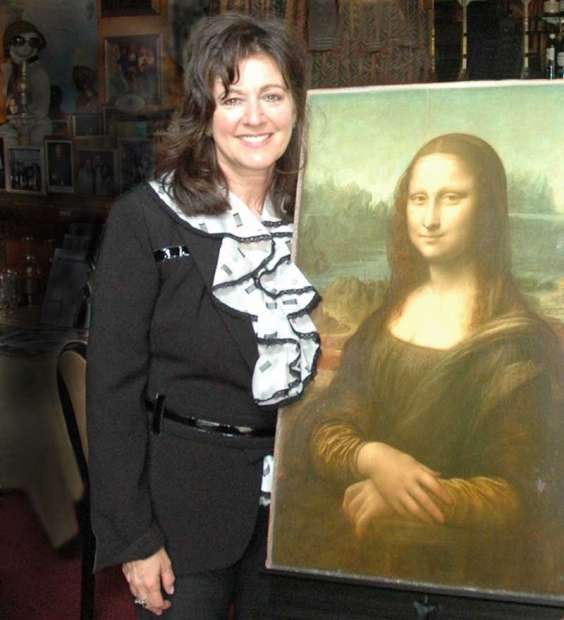
The Barbero Stand at the Fancy Food Show in San Francisco
The show presented specialty food companies from everywhere in the world. But that’ was only one part of the three days program. It also accomodated an Incubator Village presenting seven food incubators and 41 companies; workshops and business-building seminars to help startups and established manufacturers; the 46th sofi Awards for outstanding specialty foods and beverages of the year; and the Food Recovery Donation, with exhibitors donating over 37,000 pounds of specialty foods.
California led the show with 370 food companies represented, followed by New York and Oregon whereas, from an international standpoint once again, Italy had the largest pavilions, showcasing well-known companies and big brands.

A sample of White Truffle by Tartuflanghe
The Italian Pavilion opened with the famous taglio del nastro (ribbon cutting) by Italian Ambassador Armando Varricchio and Italian Consul General Lorenzo Ortona. After the kick off, we had a walk around the Pavilion and, after tasting different kinds of foods, we picked the ones that took us by surprise, either for their innovative approach or by the passion and the hard work behind their production.
What would you miss the most if you had to spend six months in a space shuttle? Tartuflanghe is a company specialized in Italian truffle products and is now experimenting foods that can be packaged and taken to the space by astronauts. Their story dates back to the late ‘60s and the restaurant Da Beppe in Alba, Piedmont, that soon became a must try for its fonduta, bagna caoda, risotto, and ravioli. The company joined the Fancy Food Show in 1992 in New York to present the Tartufissima, the special pasta combining truffle with porcini mushrooms.That product brought Tartuflanghe into a scenario where food innovation is welcomed alongside tradition, respect for the environment and sustainability.
Paolo Montanaro, President of the Company, said: “We have labs to produce pasta, sauces, and products related to truffle, in additions to products tartufo-based. For example, the encapsulated white truffle oil; the pesto powder that maintains the original flavour of the fresh genovese pesto, preserving the original characteristics of fresh basil and other ingredients; and the 100% dehydrated white truffle.” And added: “We started by dehydrating truffles and we ended up collaborating with the Spacial Agency from Turin, ARGOTEC, which also works close with the European Space Agency. They decided to present some of our products to ESA for Italian astronaut Luca Parmitano’s mission. One year later, the innovation was used to prepare products for other astronauts, too: we involved some well known cooks, like Massimo Bottura, and started producing special ingredients, like mozzarella, pesto, and sea urchins.” What’s your latest product, we asked: “We are now working with olive pits, from which we can produce special bread, so nothing gets wasted when working with these basic ingredients.”
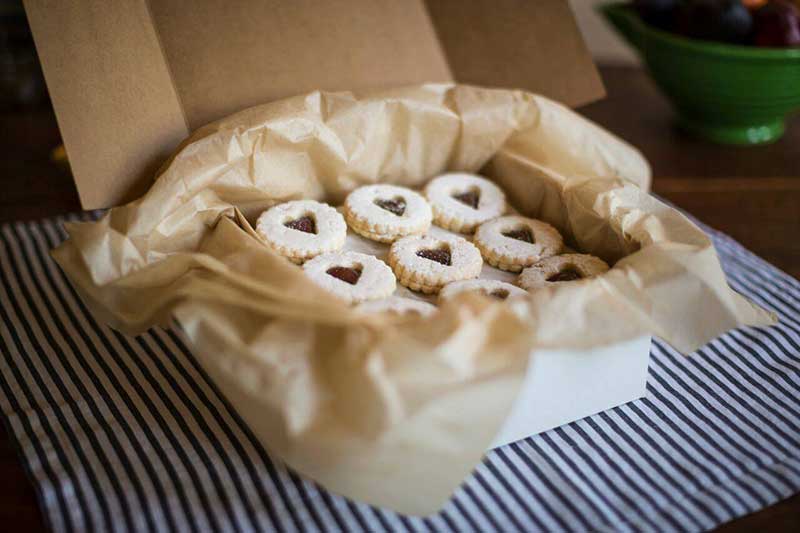
A sample of Cookies con Amore presented by Nonna Fernanda at the Fancy Show
From innovative foods to traditional torrone.The Barbero Company joined the San Francisco Show for the first time and its owner, Davide Maddaleno, could not be happier. “We are here to look for new customers, and we already had some good feedback.” The company is based in Asti and just discovered, thanks to documents found at the municipal archives of Mombercelli d’Asti, that Filippo Barbero was a baker at the church of Mombercelli d’Asti already in 1838; at that time, being a baker meant being a producer of bread, cakes, biscuits, but also nougat and noasetti (hazelnuts covered with sugar). The official date of the launch of the Barbero company, however, remains 1883, when Melchiorre Barbero asked and obtained the license to sell nougat and noasetti. Two years later, he gained the degree of progress at the fairs of Naples, Turin and Leghorn, and “King Vittorio Emanuele white cross” price for the careful production of his delicious specialties. “We can proudly say that we are a six generations torrone producers. Our first product was torrone, that kept the original recipe that requires almonds but we decided to change them to local hazelnuts. The crumbly torrone Barbero has unique characteristics as it is a product still produced according to the old recipe of Asti torrone.” And ended: “We do also chocolate and added new products, because my grandfather first started the chocolate production in the ‘60s and we now make products with gianduia chocolate, that our customers love.”
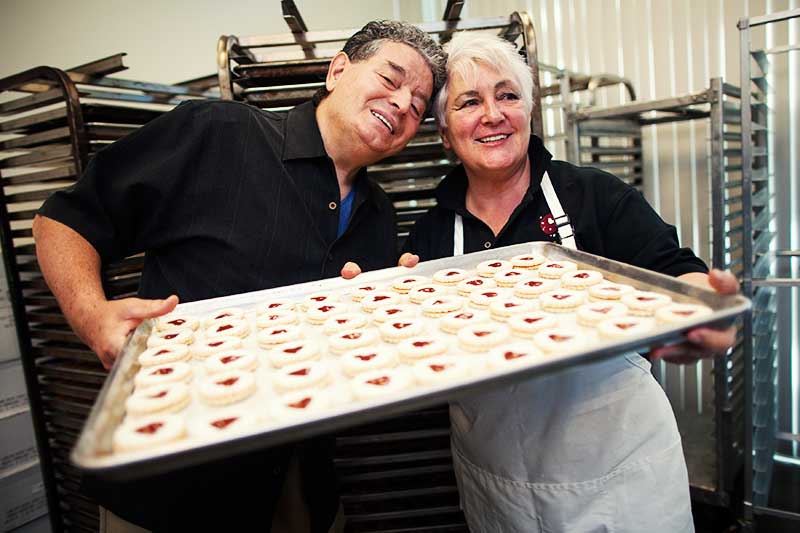
Fernanda Capraro and her husband at Cookies con Amore factory
Old-fashioned recipes are also at the core of a local business based in the Bay Area. Cookies con Amore was launched in 2015 when Fernanda and Angelo decided to devote themselves to what they love best: cookies. Born in Sant’Elia, South Italy, they shared the love for cookies made by their grandmoms. Their cookies were so delicious that, when a young man in the village popped “the question” to his beloved, the next question was what would Nonna bake for the wedding. Fernanda and Angelo took their love for cookies to California in the 1970s, where they started a family of their own and opened a series of Italian delis and Villa Romana restaurant in Laguna Beach. Nonna Fernanda was at the ItalFoods stand and revealed: “I started the business and called it Cookies with Love but did not sound right to me and changed it into ‘con Amore’ pretty soon. We started with a small space for a few of us, then we expanded to the point we have now 50 employees. I still make cookies, but also teach how to make them. My daughter is the chemist and my son is the artist for all marketing things. My husband is the Quality Control Man, but I am the boss, the one who makes decision!” What’s coming next for the business? “I can proudly say that our most popular cookie is the one with the heart signature filled with jam. However, lately my grandson and my granddaughter-in-law became vegan and it broke my heart because they could not eat them. We are now working on the same products with a vegan twist.” Wondering what’s Nonna Fernanda’s secret? Passion, of course.
Being a family business is a characteristic of many Italian companies in the food industry. Colavita calls itself a “trusted family brand,” finding its origins back in 1938 in the small olive mill in the village of Sant’Elia a Pianisi, in the Molise region. Giovanni’s sons, Enrico and Leonardo Colavita, extended the family business, expanded to the US and, in 1979, they found their first foreign partner to distribute Colavita olive oil around the world. Mr Leonardo Colavita was at the Food Show, meeting existing and potential customers. “Oftentime Italian companies asked me how we succeeded at this. Not easy to explain because that’s the story of my life, not only the story of the business. This coming July, we will celebrate 40 years of partnership in the US. Along this journey, we met many companies that wanted to replicate what we have done from a business perspective.” And…? “To be honest, it would be much easier for me to tell the story of our business, but here we are talking about a family business story and it is more complicated, maybe more interesting.” What makes your business different, we asked? “The synergy that exists beyond generations talks to our consumers and we are grateful for that. I keep asking my sons if they want to keep this business alive, and they have no doubts they do. I try my best to push young Italians so they can look for partners with whom to build the same relationship. We did it and we were successful, so we believe others can do the same.”
L’annuale Winter Fancy Food Show della Specialty Food Association è tornato nella Bay Area e il 13 gennaio è stato inaugurato il più grande mercato dedicato alle specialità gastronomiche e alle bevande della West Coast.
Era il 1952 quando, per la prima volta, la città di New York ospitava l’associazione commerciale non-profit appena nata. Oggi, con due edizioni annuali tra le coste orientali e occidentali, fornisce a circa 4.000 artigiani del settore alimentare, importatori, acquirenti e imprenditori di tutto il mondo risorse, conoscenze e contatti per avere successo nell’industria alimentare.
La rassegna comprende oltre 1.400 aziende che espongono oltre 90.000 specialità alimentari. San Francisco ha dato il benvenuto alla Winter Edition, offrendo opportunità di degustazione, nuove tendenze, attività di apprendimento e contatti. Tutto sotto lo stesso tetto, il Moscone Convention Center.
La rassegna ha presentato aziende alimentari specializzate da ogni parte del mondo. Ma quella è stata solo una parte del programma di tre giorni. Ha anche ospitato un Incubator Village presentando sette incubatori alimentari e 41 aziende; seminari e incontri di formazione aziendale per aiutare startup e produttori affermati; il 46° Sofi Award per le migliori specialità e bevande dell’anno; e il Food Recovery Donation, con espositori che hanno donato oltre 37.000 libbre di prodotti alimentari.
La California ha guidato la rassegna con 370 aziende alimentari rappresentate, seguita dalle aree di New York e Oregon, mentre, da un punto di vista internazionale, ancora una volta, l’Italia ha avuto le aree espositive più grandi, con aziende famose e grandi marchi.
Il Padiglione italiano si è aperto con il famoso taglio del nastro dell’Ambasciatore italiano Armando Varricchio e del Console Generale italiano Lorenzo Ortona. Dopo l’inaugurazione abbiamo fatto una passeggiata in giro per il Padiglione italiano e, dopo aver assaggiato diversi tipi di alimenti, abbiamo scelto quelli che ci hanno sorpresi, sia per il loro approccio innovativo o per la passione e il duro lavoro dietro alla loro produzione.
Cosa vi mancherebbe di più se doveste passare sei mesi in una navicella spaziale? Tartuflanghe è un’azienda specializzata in prodotti a base di tartufo italiano e ora sta sperimentando alimenti che possono essere confezionati e portati nello spazio dagli astronauti. La loro storia risale alla fine degli anni ’60 e al ristorante Da Beppe ad Alba, in Piemonte, che ben presto è diventato un must per la sua fonduta, la bagna cauda, il risotto e i ravioli. La società ha aderito al Fancy Food Show nel 1992 a New York per presentare Tartufissima, la speciale pasta che unisce il tartufo ai funghi porcini. Questo prodotto ha portato Tartuflanghe in uno scenario in cui l’innovazione alimentare è sostenuta insieme a tradizione, rispetto per l’ambiente e sostenibilità.
Paolo Montanaro, presidente della società, ci ha detto: “Abbiamo laboratori per produrre pasta, salse e prodotti legati al tartufo, oltre ai prodotti a base di tartufo. Ad esempio, l’olio al tartufo bianco incapsulato; il pesto in polvere che mantiene il sapore originale del pesto genovese fresco, preservando le caratteristiche originali del basilico fresco e degli altri ingredienti; e il 100% tartufo bianco disidratato”. E ha aggiunto: “Abbiamo iniziato disidratando i tartufi e abbiamo finito per collaborare con l’Agenzia Spaziale di Torino, Argotec, che lavora anche a stretto contatto con l’Agenzia Spaziale Europea. Hanno deciso di presentare alcuni dei nostri prodotti all’ESA per la missione dell’astronauta italiano Luca Parmitano.
Un anno dopo, l’innovazione è stata anche utilizzata per preparare prodotti per altri astronauti: abbiamo coinvolto alcuni noti chef, come Massimo Bottura, e iniziato a produrre ingredienti speciali, come mozzarella, pesto e ricci di mare”. Qual è il vostro ultimo prodotto, abbiamo chiesto: “Ora stiamo lavorando con i noccioli d’oliva, da cui possiamo produrre un pane speciale, quindi niente viene sprecato quando si lavora con questi ingredienti di base”.
Dagli alimenti innovativi al torrone tradizionale. La società Barbero ha partecipato per la prima volta alla rassegna di San Francisco e il suo proprietario, Davide Maddaleno, non potrebbe essere più felice. “Siamo qui per cercare nuovi clienti, e abbiamo già avuto dei buoni feedback”. L’azienda ha sede ad Asti e ha appena scoperto, grazie ai documenti trovati presso l’archivio comunale di Mombercelli d’Asti, che Filippo Barbero era un fornaio per la chiesa di Mombercelli d’Asti già nel 1838; a quel tempo essere un fornaio significava produrre pane, dolci, biscotti, ma anche torroncini e noasetti (nocciole ricoperte di zucchero). La data ufficiale dell’apertura della Barbero, tuttavia, rimane il 1883, quando Melchiorre Barbero chiese e ottenne la licenza per vendere torrone e noasetti. Due anni dopo, ottenne il Diploma di Progresso alle esposizioni di Napoli, Torino e Livorno e il “Premio Vittorio Emanuele della Croce Bianca” per l’accurata fabbricazione delle sue specialità. “Possiamo dire con orgoglio che siamo produttori di torrone da sei generazioni. Il nostro primo prodotto è stato il torrone, che conserva la ricetta originale che richiede le mandorle, ma abbiamo deciso di cambiarle in nocciole locali. Il friabile torrone Barbero ha caratteristiche uniche in quanto è un prodotto ancora fatto secondo l’antica ricetta del torrone di Asti”. E conclude: “Facciamo anche il cioccolato e abbiamo aggiunto nuovi prodotti, perché mio nonno ha iniziato la produzione di cioccolato negli anni ’60 e ora produciamo prodotti con cioccolato al gianduia, che i nostri clienti amano”.
Le ricette vecchio stile sono anche al centro di un’azienda locale con sede nella Bay Area. Cookies con Amore è stata lanciata nel 2015 quando Fernanda e Angelo hanno deciso di dedicarsi a ciò che amano di più: i biscotti. Nati a Sant’Elia, nel Sud Italia, hanno condiviso l’amore per i biscotti fatti dalle loro nonne. I loro biscotti erano così deliziosi che, quando un giovane nel villaggio fece “la proposta” alla sua amata, la domanda successiva fu cosa avrebbe preparato la nonna per il matrimonio. Fernanda e Angelo portarono il loro amore per i biscotti in California negli anni ’70, dove hanno formato la loro famiglia e aperto una serie di negozi di specialità gastronomiche italiane e il ristorante Villa Romana a Laguna Beach.
Nonna Fernanda era allo stand di ItalFoods e ha rivelato: “Ho iniziato l’attività e l’ho chiamata Cookies with Love ma non mi suonava bene e l’ho trasformata in “con Amore” molto presto. Abbiamo iniziato con un piccolo spazio per alcuni di noi, quindi l’abbiamo ampliato fino a raggiungere 50 dipendenti. Faccio ancora biscotti, ma insegno anche come farli. Mia figlia è la chimica e mio figlio è l’artista per tutte le cose del marketing. Mio marito è l’uomo del controllo qualità, ma io sono il capo, chi prende le decisioni!”. Prossime iniziative? “Posso dire con orgoglio che il nostro biscotto più popolare è quello con il cuore pieno di marmellata. Tuttavia, ultimamente mio nipote e sua moglie sono diventati vegani e mi hanno spezzato il cuore perché non potevano mangiare i biscotti. Ora stiamo lavorando sugli stessi prodotti ma con un approccio vegano”. Ti chiedi quale sia il segreto di Nonna Fernanda? Passione, ovviamente.
Essere un’azienda familiare è una caratteristica di molte aziende italiane nel settore alimentare. Colavita si autodefinisce un “marchio familiare di fiducia”, trovando le sue origini nel 1938 nel piccolo frantoio nel villaggio di Sant’Elia a Pianisi, in Molise. I figli di Giovanni, Enrico e Leonardo Colavita, estesero l’azienda di famiglia, si espansero negli Stati Uniti e, nel 1979, trovarono il loro primo partner straniero per distribuire l’olio d’oliva Colavita in tutto il mondo. Il signor Leonardo Colavita era presente alla Food Show, per incontrare clienti attuali e potenziali. “Spesso le aziende italiane mi hanno chiesto come ci siamo riusciti. Non è facile da spiegare perché è la storia della mia vita, non è solo la storia dell’impresa. Il prossimo luglio celebreremo 40 anni di collaborazione negli Stati Uniti. Lungo questo viaggio, abbiamo incontrato molte aziende che volevano replicare ciò che abbiamo fatto dal punto di vista del business”. E …? “Ad essere onesti, sarebbe molto più facile per me raccontare la storia della nostra attività, ma qui stiamo parlando di una storia di famiglia ed è più complicato ma forse più interessante”. Che cosa rende la vostra attività diversa, abbiamo chiesto? “La sinergia che esiste al di là delle generazioni parla con i nostri clienti e ne siamo grati. Continuo a chiedere ai miei figli se vogliono mantenere vivo questo business, e non hanno dubbi che lo faranno. Faccio del mio meglio per spingere i giovani italiani in modo che possano cercare partner con cui costruire la stessa partnership. L’abbiamo fatto noi e abbiamo avuto successo, quindi crediamo che altri possano fare lo stesso”.




